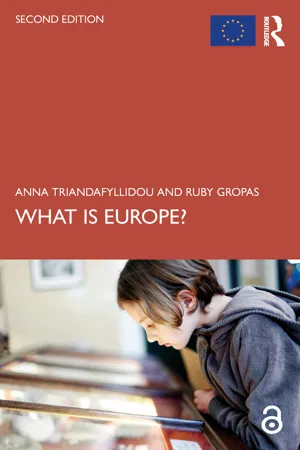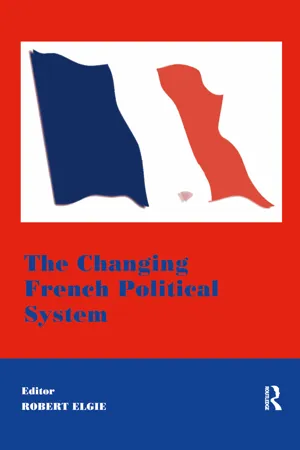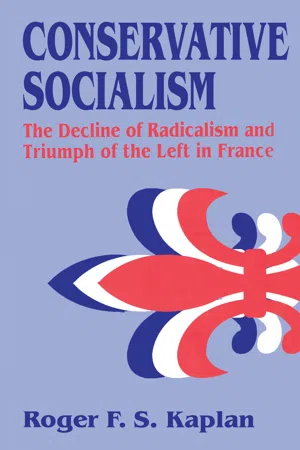History
Political Changes In Europe
"Political Changes in Europe" refers to the series of transformations in governance, power structures, and ideologies across the continent. These changes have been shaped by events such as revolutions, wars, and the rise and fall of empires. They have led to the establishment of new political systems, the redrawing of borders, and shifts in international relations, influencing the course of European history.
Written by Perlego with AI-assistance
Related key terms
4 Key excerpts on "Political Changes In Europe"
- eBook - ePub
- Anna Triandafyllidou, Ruby Gropas(Authors)
- 2022(Publication Date)
- Routledge(Publisher)
Examining the political dimensions that define or contribute to our understanding of what Europe is essentially requires one to navigate between continuity and change. The twentieth century has been a period of deep transformation that has culminated in a Union of member states that by and large aims to represent the long-aspired ideals of peace, unity, and democracy. These accomplishments were severely challenged by the euro crisis and its consequences, as well as the rise of illiberal authoritarianism and far-right populists. But to better understand today’s undercurrents of political change within and across Europe, it is useful to take a closer look at the transformations that occurred during the twentieth century on the European political landscape:the transformation of the European state through progressive European integration; the redrawing of the boundaries between public and private (nationalisation and, later, privatisation), as well as the readjustment of territorial boundaries through decentralisation, regionalisation and federalisation; changes in patters of democratic participation, protest, elections and political communication; the changing character of political parties and changing patterns of party competition; the new challenges faced the European welfare states; and changes in the organization and style of executive government.(Goetz, Mair and Smith 2008 , p. 40)These changes have altered both the character of Europe and our understanding of it. Today, any discussion of European politics or of politics in Europe is defined by the European Union, even if by contrast rather than consensus or support. Since the 1980s, researchers have been examining the effects of the EU on democratic politics within and across the member states. One of the core concerns was whether European integration could remain a broadly consensual elite project detached from domestic political competition. Another was how the democratic deficit that characterised the EU could be addressed to protect the quality of democracy within the nation-states. In essence these issues raised the overarching question of whether European integration might constitute a new political cleavage, one pitting the winners of globalisation against the losers (Hooghe and Marks 2008 - eBook - ePub
- Anna Triandafyllidou, Ruby Gropas(Authors)
- 2015(Publication Date)
- Bloomsbury Academic(Publisher)
A more diverse reading of the post-communist political landscape of Central and Eastern Europe was put forward by Stephen Whitefield (2002). He argued that political cleavages emerged in each state across the region, reflecting the country’s historical inheritances as well as its post-communist economic and social experiences. He made the case that communist rule did not destroy social identities of class, religion, region and ethnicity, which were to prove immediate sources of division; rather the contrary, he argued, it probably maintained them and even stimulated them. Studies of Europe’s post-communist democracies have emphasized the lack of institutionalization of patterns of government and opposition (characteristic of Western Europe) and the fragmentation of their political systems. However, recent studies have exposed a significant confluence between East and West to a much wider degree than previously expected (Albertazzi and Mueller, 2013; Best, 2013; Casal Bertoa, 2013; van Biezen and Wallace, 2013). European politics transformed Examining the political dimensions that define or contribute to our understanding of what Europe is essentially requires one to navigate between continuity and change. The twentieth century has been a period of deep transformation that has culminated in the present reality of a Union of 28 member states that by and large represent the long-aspired-to ideals of peace, unity and democracy. These accomplishments may at present be severely challenged by the euro crisis and its consequences, but in order to better understand today’s undercurrents of political change within and across Europe it is useful to take a closer look at the transformations that occurred during the twentieth century on the European political landscape. First, many analysts have argued that in the course of the twentieth century there has been a transition from modern to post-modern politics - eBook - ePub
- Robert Elgie(Author)
- 2013(Publication Date)
- Routledge(Publisher)
The aim of this volume is to chart some of the most significant changes in contemporary French politics and the study of it. Each contribution focuses on developments that have occurred in more or less specific aspects of the political system, including party politics, political institutions and the policy-making process generally. Together, these essays clearly illustrate both the breadth and the rates of change in various aspects of the political system. They indicate the variety of political situations that have manifested themselves in recent times. They also demonstrate the utility of new intellectual perspectives as a way of making sense of such change.By way of introduction, the aim of this essay is to put the theme of change in context. It does so, first, by examining change in French politics , outlining the broad areas in which change has taken place and, in so doing, setting the scene for the contributions which follow; second, by considering change and French politics , suggesting that change is an ongoing process which has not simply resulted in the transition from one distinct model of politics to another; and, third, by reflecting on French politics and change , noting that the process of change raises new and fundamental questions as to the nature of the political process, while at the same time it leaves old and equally fundamental questions still needing to be addressed.CHANGE IN FRENCH POLITICS
Identifying the areas of change in French politics is a task at which Sisyphus himself might have balked. After all, it is scarcely an exaggeration to say that at least one of the most oft-cited sources of change, Europeanisation, has to a greater or lesser extent affected almost every aspect of the political process. Nevertheless, it is useful to illustrate the variety of change in French politics under three separate headings: political representation, political institutions and politics and policy making. Under each heading there have been several notable developments in recent years.Political Representation
There have been changes in the context of political representation. Most notably, the system has undergone a period of party political change. Here, there have been important developments in the relationships within and between the more established parties in the system. These developments have affected the parties of the left, the mainstream right and the extreme right equally. At the same time, there have also been developments at the limits of the party system and, indeed, beyond. Most notably, established parties have been challenged by new expressions of political mobilisation. - eBook - ePub
Conservative Socialism
The Decline of Radicalism and the Triumph of the Left in France
- Roger F. S. Kaplan(Author)
- 2017(Publication Date)
- Routledge(Publisher)
10Europe and the Transformation of French PoliticsThe History of a Movement
Europe, both as a civilization and as the defining geopolitical principle of the several European peoples, is a very old idea. It is older than the idea, or rather the various ideas, under which the different European nation-states developed. As a unified concept, as the idea of a civilization, Europe is as old as the Roman Empire, including of course the Eastern empire which lasted far longer than the Western one. But although the nation-state took shape during the Middle Ages in France and England, it could be argued that it was only in the mid-seventeenth century, with the Treaty of Westphalia (1648), that the idea of the nation, sovereign and inviolable (in principle), was widely recognized as the organizing principle of European polities.The Treaty of Westphalia was an attempt to resolve the “German Question,” which during the Thirty Years’ War had killed off about one-third of the populations of the many states in the vast and indeterminate region east of the Rhine and west of the Polish plains. The Treaty of Washington, which almost exactly three hundred years later created the Federal Republic of Germany, was a step in the long search for an answer to this question, as was the elaboration of a European federation, which gave birth first to a Common Market, then to a European Community, and finally, with the Treaty of Maastricht in 1992, to a European Union. The driving idea of the European Union is that Germany is part of Europe and Europe is not run by Germany. In practice, this has meant that Europe, as an entity, depends on friendship, or at least cooperation, between France and Germany.This is because France is the only European power that can challenge Germany for hegemony on the continent. Half-Asian Russia represented a potential hegemonic power when it was the Soviet Union. The United States represents a commercial-capitalist challenge of sorts, but scarcely a political threat. The real challenge to German power came from the communist movement backed by Russian, or Soviet, imperialism.
Index pages curate the most relevant extracts from our library of academic textbooks. They’ve been created using an in-house natural language model (NLM), each adding context and meaning to key research topics.



